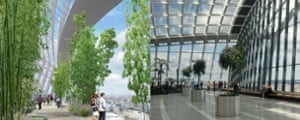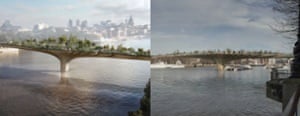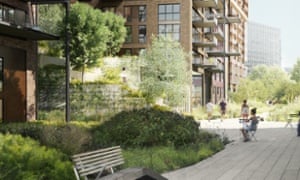 |
| ‘She picked up things no one else could see’ … Jane Jacobs holding a petition. Photograph: Phil Stanziola/World Telegram & Sun/Library of Congress |
"Robert Moses was the despotic planner hellbent on building four-lane highways through neighbourhoods. She was the cyclist who stopped him. A new film, Citizen Jane, revisits their David and Goliath struggle for the soul of New York
“There is nobody against this,” insisted a flustered Robert Moses at the hearing for his plan to drive a four-lane highway through New York’s Washington Square Park in 1958. “Nobody, nobody, nobody but a bunch of ... a bunch of mothers.”
The despotic city planner hadn’t counted on the determination of the mothers in question, or the ferocity of their leader – an owlish stenographer and freelance journalist by the name of Jane Jacobs. As part of his insatiable hunger for grand public works, Moses wanted to extend Fifth Avenue through the square, ostensibly to ease congestion, but with the real motive of rewarding developers and raising property values south of the park, where he had already razed a swath of Greenwich Village for redevelopment.
Jacobs, who lived in the West Village and knew how much her neighbourhood valued the park, mobilised a vocal coalition of campaigners, residents and politicians, who eventually halted the project. “It is very discouraging to do our best to make the city more habitable,” Jacobs wrote to the mayor, “and then to learn that the city is thinking up schemes to make it uninhabitable.”
That hearing was the only time Jacobs and Moses ever crossed paths, the single meeting in an oft-recounted, years-long David and Goliath saga of the saintly protector of the streets fighting the villainous master builder. Their duel, which came to symbolise the struggle of “bottom-up” versus “top-down”, is the focus of a new documentary, Citizen Jane: Battle for the City, made to commemorate her centenary last year.
Now arriving in the UK, the film brings home the enduring relevance of her ideas. Three years after her Washington Square victory, the inquisitive self-taught journalist published a book that would change urban planning for ever. The Death and Life of Great American Cities was a rallying cry against the destruction the broad brush of postwar urban renewal was wreaking on the fine grain of the city.With startling precision and sensitivity, Jacobs detailed how streets and spaces are actually used by people, as opposed to how they are perceived from above on the politician’s grand plan. Jacobs deployed her training in zoology, geology and political science to look at the city through an anthropologist’s eye, using ecological metaphors to describe urban life as a complex and fragile ecosystem. As one of the talking heads in the documentary puts it: “She was the hypersensitive antennae, picking up on things no one else could see.”
To her, the success of a vibrant city came from the “intricacy of pavement use, bringing with it a constant succession of eyes”. This daily “street ballet” of public interaction that unfolded outside her house is depicted with archive footage of bustling Manhattan dating from the early to mid 20th century. “There must be eyes upon the street,” she wrote, “eyes belonging to those we might call the natural proprietors of the street. The buildings on a street equipped to handle strangers, and to insure the safety of both residents and strangers, must be oriented to the street. They cannot turn their backs or blank sides on it and leave it blind.
It all sounds like common sense now, but to the postwar planners – infected with the modernist dogma of sweeping the slate clean to make way for tower blocks in wide open spaces – this was an affront to everything they had been taught. Jacobs had witnessed at first hand the failures of urban renewal in Philadelphia, where a zoning masterplan siloed different functions – housing, industry, offices, shops –into towers, separated by yawning public spaces lined with retail units that were soon lying empty. People weren’t behaving as they should, the planners said, refusing to accept that their brave new concrete vision wasn’t tuned to how citizens actually behave.
The documentary forcefully charts Jacobs’ battles and the level of destruction power-hungry Moses inflicted on existing communities in the name of improving New York for the greater public good. We see the carnage inflicted by the Cross Bronx Expressway, the country’s first major urban highway, which carved a ravine through the borough, fatally separating north and south Bronx in a piece of vandalism described by writer Mike Davis as “the single most destructive act in the history of US cities”.
The Lower Manhattan Expressway, which Jacobs and her allies halted, would have inflicted a similar fate on Soho and Little Italy – conveniently framed by Moses as a crime-ridden “hell’s hundred acres”, to be swept clean by gleaming new arteries topped with futuristic mega-structures. Old TV clips show “Big Bob the Builder” oozing arrogance and reptilian cunning, as he condemns whole areas, describing a low-income part of Harlem as “a cancerous growth that has to be carved out” and scoffing at the idea of compensating landowners who stand in his way: “Do you think anything would ever be built if we did that?” All that’s missing is footage of him being chauffeur-driven around the city in his stretch limo with pigskin seats.
By contrast, Jacobs is the indomitable champion of the people, gliding around town on her bicycle, corralling campaigns into action. She was a master of popular media, choreographing stunts like mock funerals for neighbourhoods and staging colourful protests with snappy badges and banners. Proclaimed Queen Jane by Vogue and photographed by Diane Arbus for Esquire, she counted Eleanor Roosevelt and Susan Sontag among her supporters.
If it all sounds a little black and white, that’s because it is. Told, retold and even produced as a children’s story, the pantomime goody-baddy narrative has become drastically oversimplified, a problem that this film does little to address. Yes, Moses was a bullying megalomaniac, but he also built 13 bridges, two tunnels, 637 miles of highways, 658 playgrounds, 10 giant public swimming pools, 17 state parks, not to mention dozens of housing projects and city parks.
Neither should Jacobs’ theories and her influence on contemporary “good practice” go totally unquestioned. “Jacobs romanticised social conditions that were already becoming obsolete,” says urban sociologist Sharon Zukin, while Deyan Sudjic, director of the Design Museum in London, believes her “underlying message is of unblinking paranoia”.
Jacobs’ writings have led to a collective received wisdom – driven by the spurious discipline of “placemaking” – that decrees every street frontage should be “active”, every public space should bustle with civic life, every bit of the city should be configured around clear “desire lines” from A to B, with citizens’ movement intricately choreographed. It is a world in which narrow alleyways and quiet corners are banished in favour of 24-hour curated vibrancy.
Ironically, in an echo of Big Bob’s hunger for demolition, Jacobs’ arguments are now being deployed to raze postwar council estates across the world, her principles mobilised to lambast “sink estates”, conflating social problems and lack of maintenance with a particular style of architecture. They are the new cancer to be carved out. At the same time, the kinds of historic districts Jacobs helped to save now often feel like open-air museums, places as soulless and devoid of real life as the high-rises she so despised.
A hint of this would have added a welcome cautionary tone to the film. Instead it ends with Saskia Sassen, the Dutch sociologist, railing against China’s new megacities as “Moses on steroids”, over footage shot from a speeding car. If urbanists got out and looked more closely, as Jacobs herself did, they’d find that urban life continues to flourish in unexpected places. As critic Paul Goldberger concludes, Jacobs’ finest quality was “a willingness to doubt the received wisdom and trust our eyes instead”.”





.jpg?1438175167)












